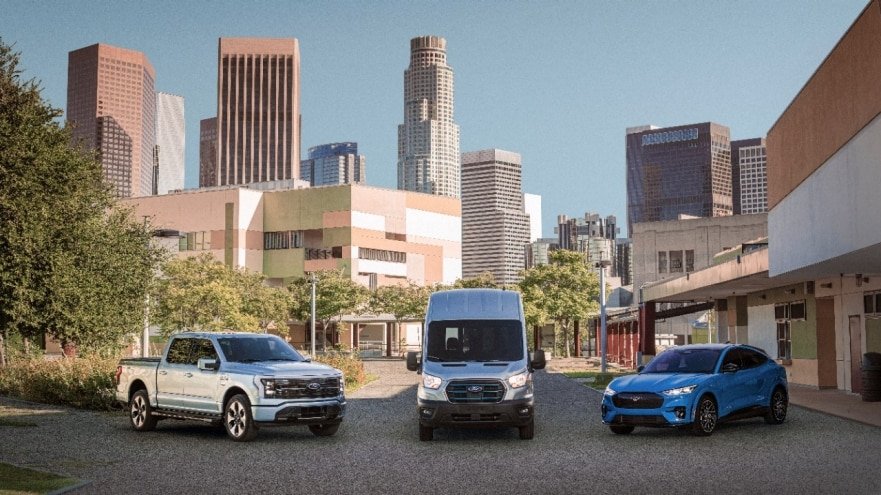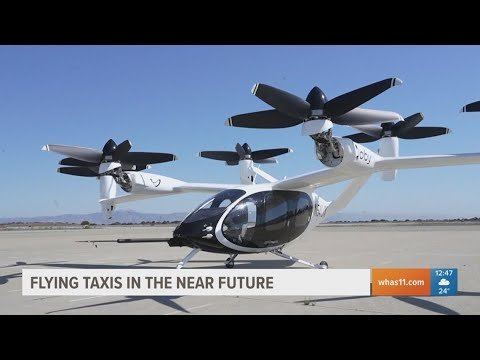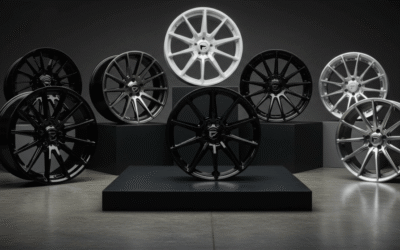This article may contain affiliate links.
The swift uptake of hybrid and electric vehicles marks a positive shift toward greater efficiency and a quieter, cleaner driving experience. As more of these advanced cars take to the road, their silent operation is celebrated. However, this same quietness introduces an unintended safety risk for some of the most vulnerable people on the road: motorcyclists. This silence removes a critical auditory cue riders have long relied on for situational awareness, leaving them in a dangerous sensory blind spot.
The stakes are incredibly high. In Washington State, for example, motorcyclists represent just 3% of registered vehicles but shockingly account for 16% of all traffic fatalities over the last five years. As an EV or hybrid driver, understanding this unique risk is the first step toward preventing a tragedy. This guide provides seven specific, actionable ways to adjust your driving habits to compensate for your vehicle’s silence and make the roads safer.

Why Quiet Cars Create Unique Risks for Motorcyclists
To effectively protect riders, it is essential first to understand the road from their perspective. The absence of traditional engine noise from your EV or hybrid isn’t just a minor difference; it fundamentally changes the environment where motorcyclists operate, removing a layer of safety they have subconsciously used for decades.
The Critical Role of Sound in Road Awareness
Experienced motorcyclists constantly scan their environment, and their hearing is as vital as their vision. They use the sounds of surrounding vehicles to detect presence, estimate speed and judge proximity, especially when a car enters their blind spot. The near-silent hum of an electric motor creates a sensory void that can make your vehicle seem to appear out of nowhere. This issue is so recognized that manufacturers like Yamaha have patented systems to add artificial engine noise and vibration to electric motorcycles, acknowledging that sound is a fundamental component of rider safety and experience.
What is an Acoustic Vehicle Alerting System (AVAS)?
An AVAS is a safety feature that can address this problem. A speaker on the vehicle emits a specific sound at low speeds to alert pedestrians, cyclists, and other road users of an EV or hybrid’s presence. While helpful, AVAS is not a complete solution. The sounds are often subtle and can be drowned out by city traffic, wind noise or a rider’s helmet. Furthermore, these systems are typically only active at low speeds. This has become a global concern, prompting governments, like the UK, to propose mandates for these systems to combat the silent risk of quiet vehicles.
How to Actively Protect Riders on the Road
Because technology like AVAS offers only partial protection, the primary responsibility falls on the driver to be more vigilant. By adopting a few conscious habits, you can compensate for your vehicle’s silent nature and become a crucial part of the safety solution for motorcyclists.
- Double-Check Your Blind Spots—Every Time. A motorcycle’s slim profile can easily disappear into a car’s blind spot. Since you cannot rely on hearing a rider next to you, a physical, visual check is your only true defence against a collision. Before any lane change or merge, practice the SMOG method:
- Signal,
- check your Mirrors,
- look Over your shoulder,
- then Go. That quick glance over your shoulder is the most effective way to spot a hidden motorcycle.
- Use Your Horn Courteously. It’s time to reframe the horn from an aggressive tool to a critical safety device. A brief, friendly tap of the horn—often called a courtesy honk—can be an invaluable audible signal that your silent car is nearby. Use it before merging into a tight space or when you see a motorcyclist preparing to change lanes in your direction. It is not about startling them; it is about gently saying, I’m here.
- Mind Your Regenerative Braking. One of the best features of an EV or hybrid is regenerative braking, where the motor slows the car down to recapture energy. However, strong regenerative braking can decelerate the vehicle significantly without activating the brake lights. A motorcyclist following behind receives no visual cue that you are slowing down, which can easily lead to a rear-end collision. Consider using a lighter regen setting in dense traffic or lightly tapping your brake pedal to illuminate the lights and alert the rider behind you.
- Increase Your Following Distance. Always give motorcyclists more room than you would give another car. A three-to-four-second following distance provides a larger safety buffer for both of you. This extra space compensates for unexpected speed changes and gives you more time to react to road hazards like potholes or gravel, which can affect a two-wheeled vehicle much more dramatically than a car.
- Be Hyper-Aware at Intersections. Left-turn crashes are one of the most common and deadly types of motorcycle accidents. A driver’s failure to see an oncoming motorcycle is a frequent cause. Before turning left or pulling out into traffic, make a conscious effort to look left, right and then take a final, careful second to look left again. This disciplined habit trains you to search for a motorcycle’s smaller profile that can be easily missed in a quick scan.
- Signal Early and Leave it On. Your turn signal is the most important visual cue you can provide. In a silent car, it’s your primary way of communicating your intentions. Signal well in advance of any turn or lane change—far earlier than you normally would. Keep your signal on until your maneuver is fully completed. This gives motorcyclists ample time to see your signal, process your intent and adjust their position accordingly.
- Eliminate All Distractions. Driving a silent vehicle next to a vulnerable road user demands 100% of your attention. Put the phone away, finish your coffee before you leave, and focus completely on the task of driving. The consequences of a moment’s inattention can be catastrophic. Driver distraction contributes to 23% of all fatal crashes in the state in 2022, a stark reminder of the importance of staying focused.
When Prevention Fails: Understanding the Consequences
Adopting safer driving habits is the best line of defence, but understanding the severe consequences of a collision underscores the urgency of this issue, particularly on Washington roads, where the danger to riders is growing.
A Rising Toll on Washington Highways
The situation for motorcyclists in Washington, as an example, has become increasingly dire. Preliminary data show 2023 was the deadliest year on record for motorcyclists in the state, with 137 fatalities. This tragic milestone highlights a worsening trend. Underscoring the severe nature of these collisions, statistics show that in Washington, one in five motorcycle crashes results in a fatality, a rate far higher than for occupants of passenger cars. The state is also ranks as one of the top adopters of EVs.
Common Causes vs. Preventive Actions
This table connects the most frequent types of motorcycle accidents with the preventative tips discussed earlier, reinforcing how your actions as an EV or hybrid driver can directly counter these common dangers.
| Common Accident Cause | Preventive Action for EV/Hybrid Drivers |
| Unsafe Lane Change into a Motorcycle | Diligent double-checking of blind spots; early signaling. |
| Left-Turn Collision at an Intersection | Looking left-right-left again, specifically for motorcycles. |
| Rear-Ending a Motorcyclist | Maintaining a safe following distance; mindful regenerative braking. |
| Collision Due to Driver Inattention | Eliminating distractions like phone use; staying focused on the road. |

Navigating the Aftermath of a Collision
Even with the best intentions, accidents happen. When they do, the physical, emotional, and financial toll on motorcyclists and their families can be devastating. Navigating the complex aftermath requires specialized knowledge and dedicated advocacy.
For those impacted, connecting with an advocate like experienced Washington motorcycle accidents lawyers is part of a path to justice and recovery. Law firms that focus on these cases, such as McPartland Law Offices, understand the unique physics of a motorcycle crash and the specific biases riders often face from insurance companies.
They champion the rights of injured motorcyclists across Washington, fighting to secure fair compensation for medical bills, lost wages and long-term suffering. This lets victims focus on what matters most: healing.
Shared Roads, Shared Responsibility
The transition to cleaner, quieter vehicles is an exciting advancement for our environment and communities. However, this progress brings a new, silent responsibility for every EV and hybrid driver. By understanding your vehicle’s unique challenges to motorcyclists and actively implementing these safety tips, you are not just being a better driver but actively protecting lives.
The quietest cars require the most attentive drivers. By turning awareness into action, you can help ensure the road is safe for everyone who travels it, regardless of the number of wheels.
The post How EV and Hybrid Drivers Can Protect Motorcyclists (7 Key Safety Tips) first appeared on Clean Fleet Report.
Source link






0 Comments